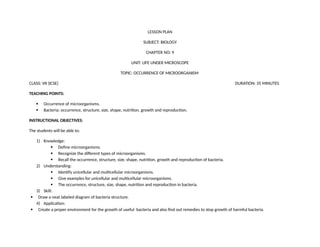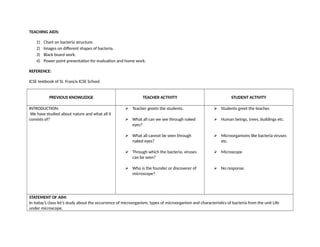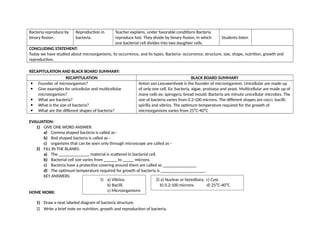The lesson plan is for a biology class on microorganisms. It will discuss the occurrence of microorganisms, focusing on bacteria. Students will learn about the discovery of microorganisms, their structures, and different types. The class will explain bacteria's occurrence, unicellular nature, sizes and shapes. Key aspects like nutrition, growth and reproduction through binary fission will also be covered. Evaluation includes questions to test students' understanding and a homework assignment on drawing bacterial structures and their life processes.






